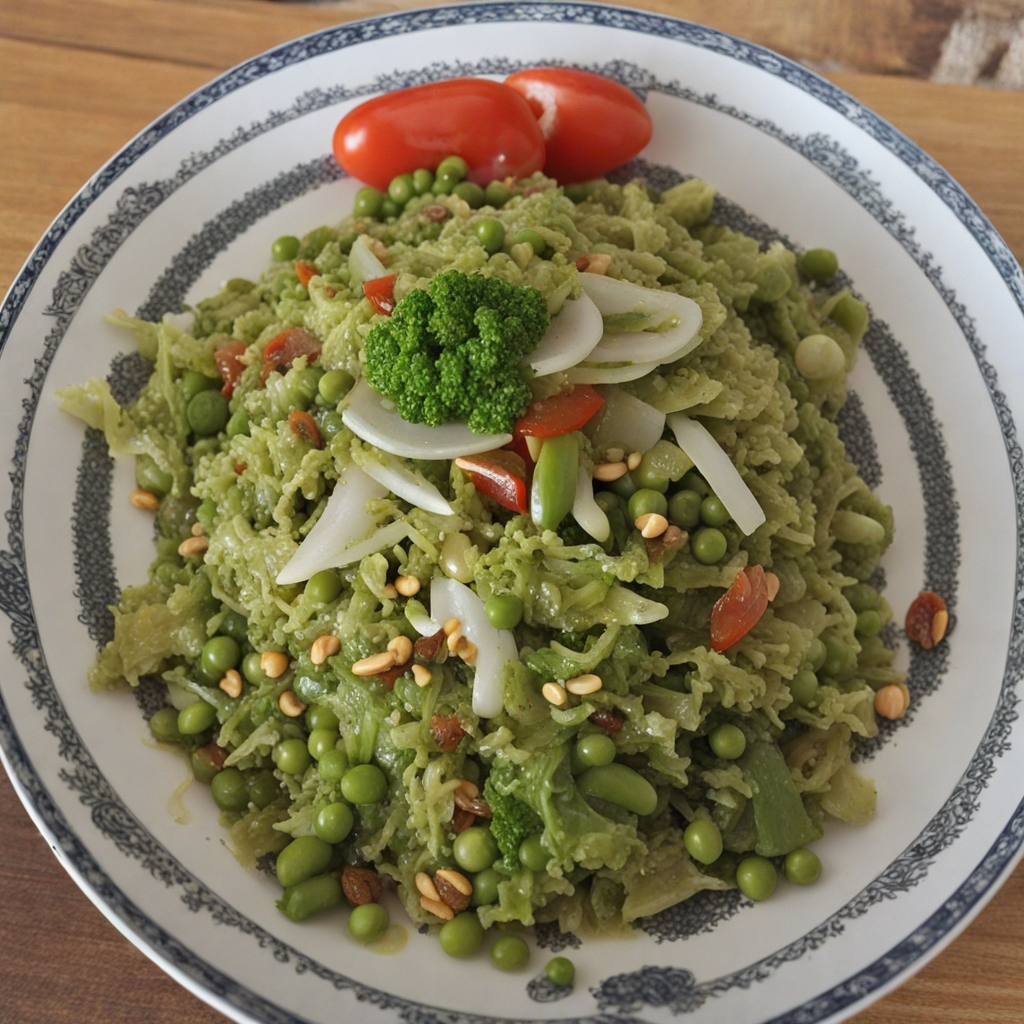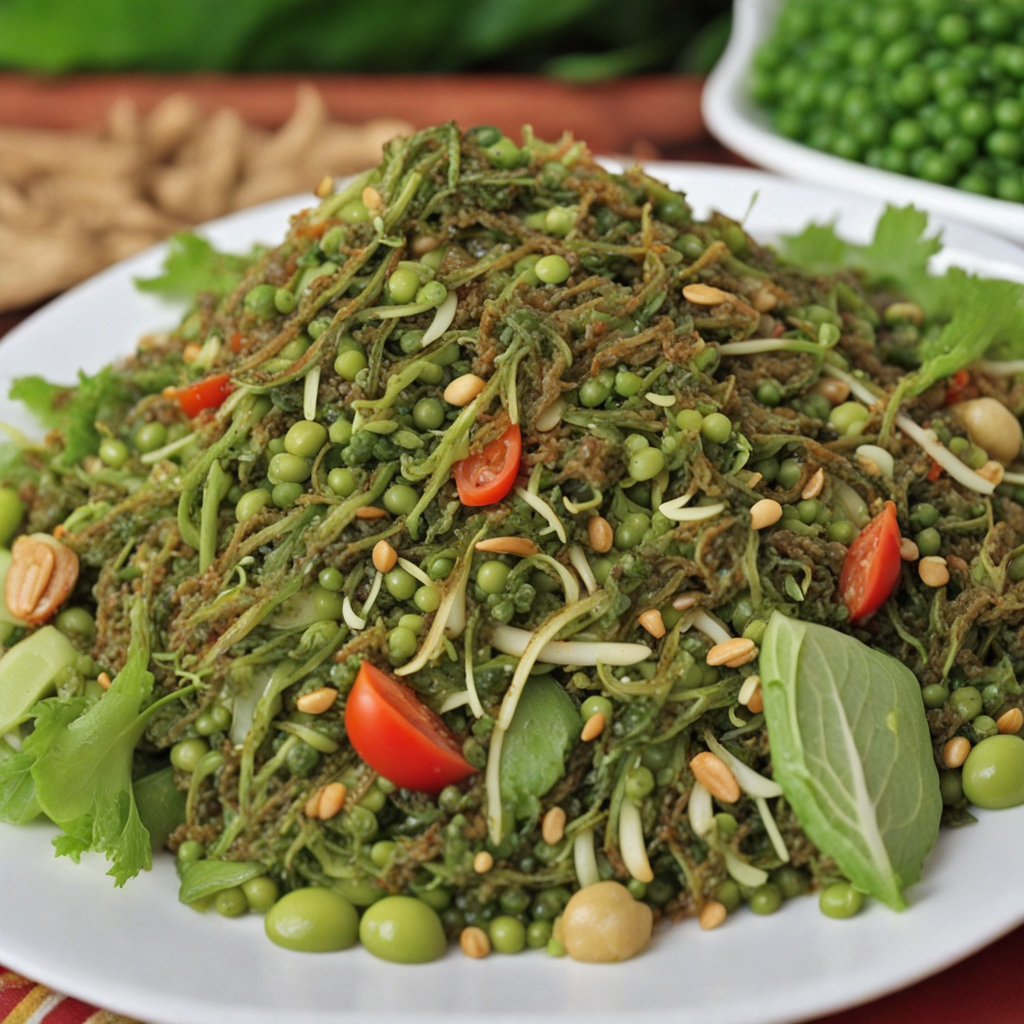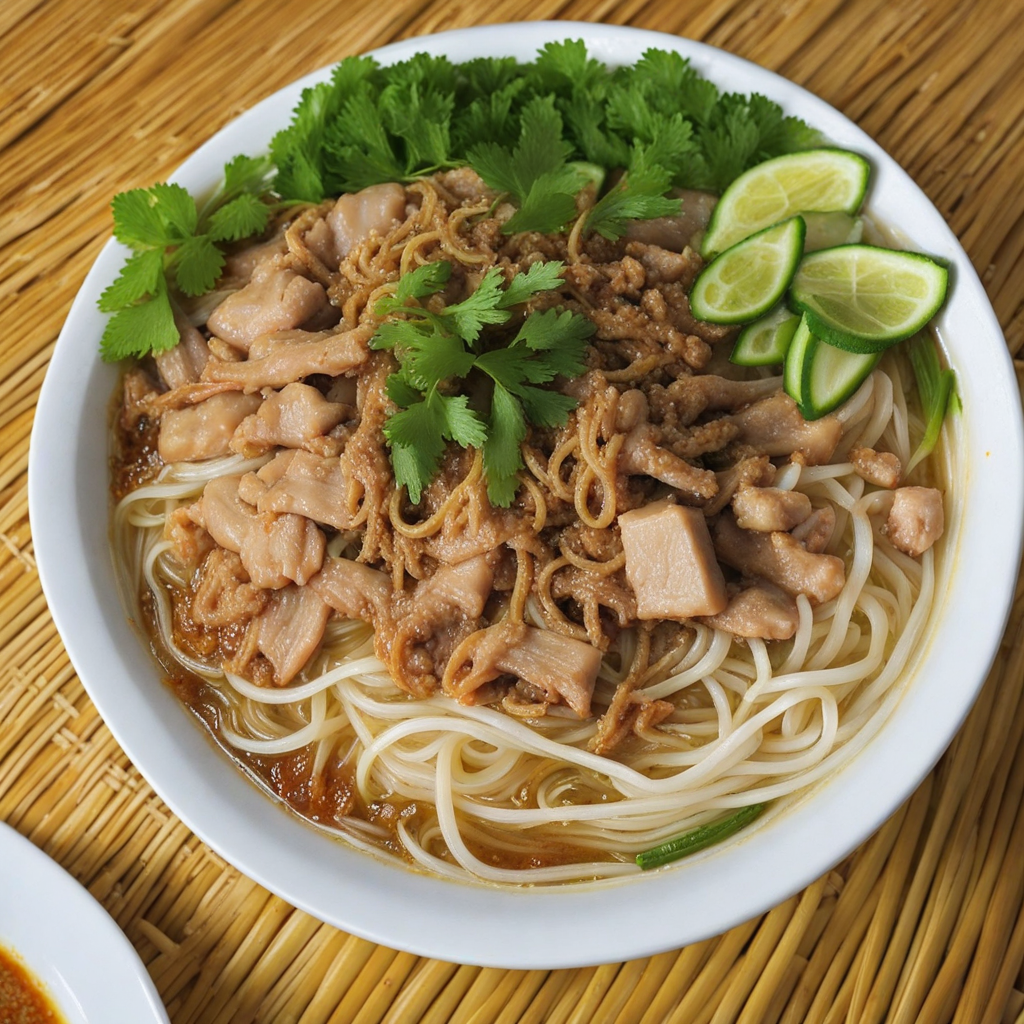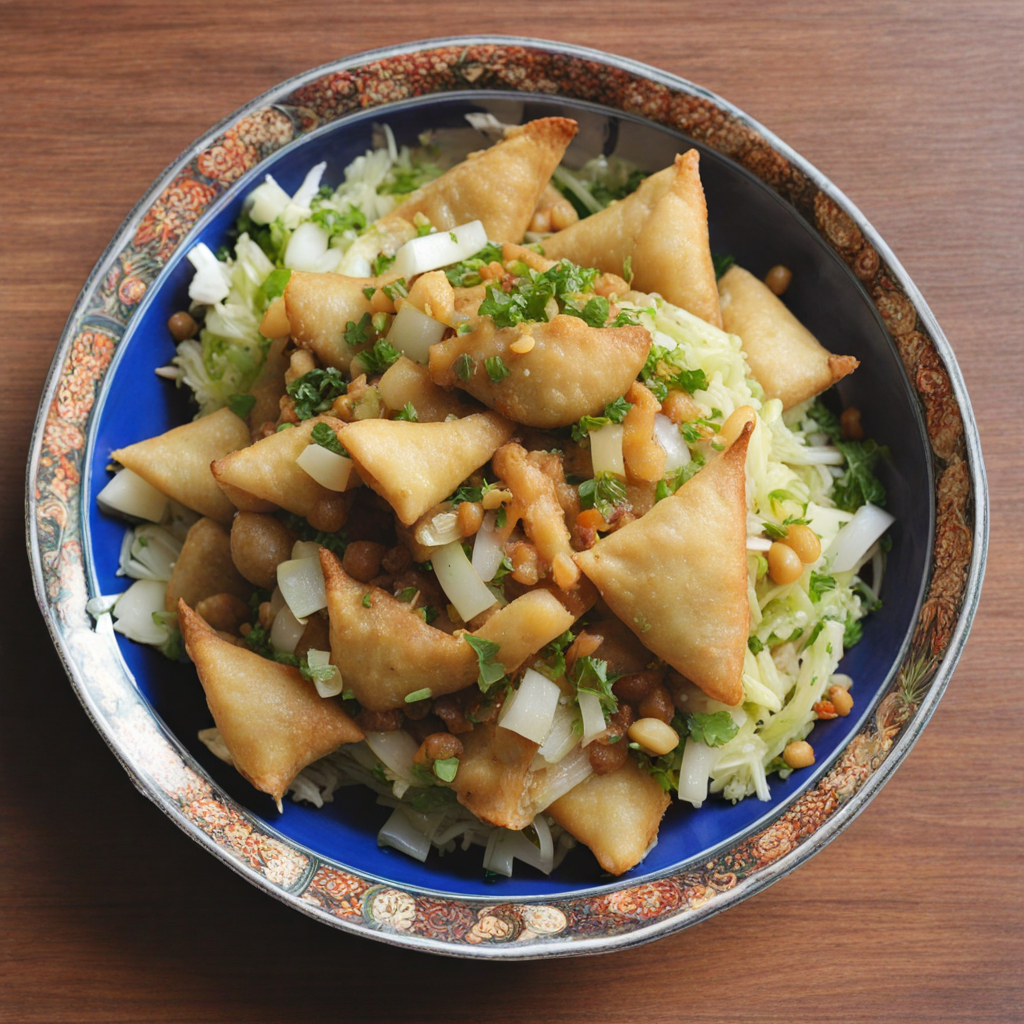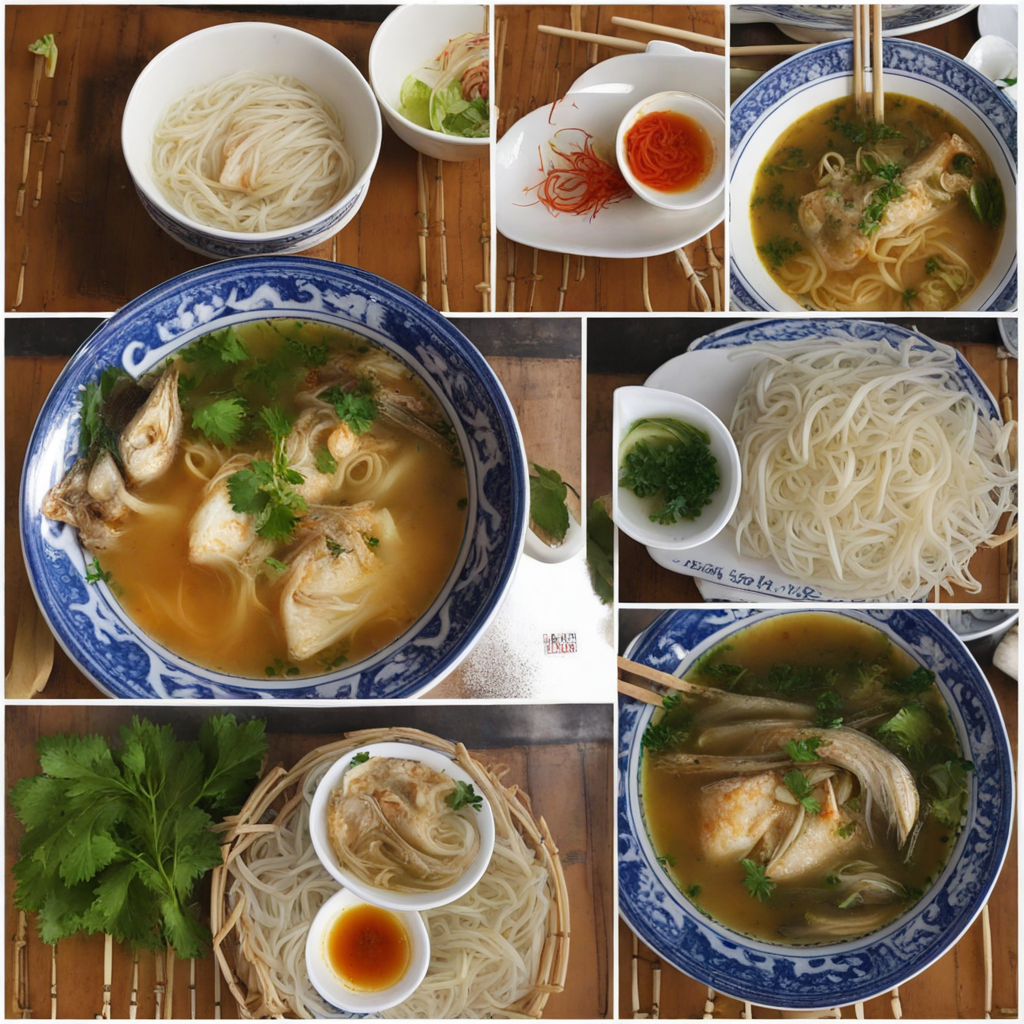Laphet Thoke
Laphet Thoke, a traditional Burmese salad, is a unique and flavorful dish that showcases the rich culinary heritage of Myanmar. At its core, the salad features fermented tea leaves, known as 'laphet,' which are the star ingredient. These tea leaves are typically harvested from the tea plants of the Shan State, fermented for several months, and then mixed with a variety of other ingredients. The result is a complex flavor profile that balances bitter, tangy, and nutty notes, making it a delightful departure from conventional salads. The preparation of Laphet Thoke involves an enticing medley of textures and flavors, as it is combined with chopped tomatoes, shredded cabbage, and roasted peanuts or sesame seeds. Often, fresh herbs like cilantro and mint are added, enhancing its freshness and vibrancy. A dressing made from fish sauce, lime juice, and spices is drizzled over the salad, bringing everything together in a harmonious blend. Each bite delivers a burst of flavors, ranging from the earthiness of the fermented tea leaves to the crunch of the nuts and the zing of the lime. Laphet Thoke is more than just a dish; it embodies a cultural significance and is often enjoyed as a snack or side dish during meals. It is a popular choice among locals and visitors alike, offering a glimpse into the traditional Myanmar way of life. Whether served at a bustling street market or during a family gathering, Laphet Thoke invites you to explore the bold and intriguing flavors of Myanmar's culinary scene, making it a must-try for anyone looking to expand their palate.
How It Became This Dish
The Rich History and Cultural Significance of 'လက်ဖက်သုပ်' (Lahpet Thoke) in Myanmar Introduction Lahpet Thoke, or fermented tea leaf salad, is a dish that embodies the culinary heritage of Myanmar (Burma). Renowned for its unique flavor profile, vibrant color, and textural contrast, this salad is more than just food; it is a symbol of cultural identity and social connection. This essay will delve into the origins, cultural significance, and evolution of Lahpet Thoke, illustrating its role in the daily lives and traditions of the Myanmar people. Origins of Lahpet Thoke The roots of Lahpet can be traced back to the ancient tea-growing regions of Southeast Asia, particularly in Myanmar, where the climate and soil conditions are favorable for tea cultivation. The history of tea in Myanmar dates back over a thousand years, with records indicating that tea was already being consumed in the region during the Pagan Dynasty (11th to 13th centuries). The Burmese have long been known for their unique practice of fermenting tea leaves, which differs from the more commonly known practices in countries like China. In Myanmar, Lahpet refers specifically to the fermented tea leaves, which are an integral part of the salad. The preparation of Lahpet involves several steps: the tea leaves are steamed or boiled, then fermented in a controlled environment, often in jars or containers, for several days. This fermentation process not only enhances the flavor of the leaves but also contributes to their nutritional value. Cultural Significance Lahpet Thoke is not just a dish; it is deeply woven into the social fabric of Myanmar. Traditionally, it is served as a gesture of hospitality, often offered to guests during gatherings or celebrations. The act of sharing Lahpet Thoke signifies respect and friendship, making it a communal dish that brings people together. In Myanmar, Lahpet Thoke is commonly enjoyed during tea ceremonies, which are pivotal in the culture. These ceremonies can take place in homes or tea shops, where the community congregates to enjoy tea, snacks, and conversation. Lahpet Thoke complements this experience, providing a crunchy, tangy, and slightly bitter contrast to the soothing qualities of tea. The dish is often accompanied by other snacks, such as rice or fried foods, making it a versatile addition to any meal. Moreover, Lahpet Thoke holds a special place in the traditional celebrations of various ethnic groups within Myanmar. For instance, during festivals or weddings, it is common for families to prepare large servings of Lahpet Thoke, showcasing the importance of the dish in ceremonial contexts. The preparation and sharing of Lahpet can also symbolize the passing down of culinary traditions from one generation to the next, reinforcing familial bonds and cultural identity. Development Over Time The development of Lahpet Thoke over the centuries showcases the adaptability and innovation of Myanmar's culinary landscape. While the fundamental ingredients—fermented tea leaves, garlic, peanuts, sesame seeds, and various spices—have remained consistent, the methods of preparation and presentation have evolved significantly. Historically, Lahpet Thoke was prepared in a more rudimentary style, with families making their own fermented tea leaves at home. As urbanization increased in the 20th century, and with the rise of the tea shop culture, the dish began to be commercialized. Tea shops became popular social hubs where people would gather to enjoy Lahpet Thoke along with their tea. This shift not only made Lahpet Thoke more accessible but also led to the emergence of various regional variations and adaptations. For instance, in different parts of Myanmar, Lahpet Thoke may include additional ingredients such as dried shrimp, tomatoes, or even various herbs, reflecting local tastes and preferences. In the Shan State, Lahpet Thoke is often served with a more robust flavor profile, incorporating chili oil and various spices. Meanwhile, in urban areas like Yangon, the dish has been modernized, appealing to younger generations who seek a balance between tradition and contemporary dining experiences. The globalization of food culture has also influenced Lahpet Thoke. As Myanmar opened up to the world in the 21st century, the dish began to gain recognition beyond its borders. Food enthusiasts and travelers have discovered Lahpet Thoke, leading to its introduction in international culinary scenes. The unique combination of flavors, textures, and health benefits has sparked interest among health-conscious eaters, further popularizing it as a trendy dish. Nutritional Value and Health Benefits Beyond its cultural significance, Lahpet Thoke is celebrated for its nutritional benefits. The fermented tea leaves are rich in antioxidants, vitamins, and minerals, making them a healthy addition to the diet. Fermentation also enhances the bioavailability of certain nutrients, allowing for better absorption by the body. The presence of healthy fats from peanuts and sesame seeds adds to its nutritional profile, making Lahpet Thoke not just a flavorful dish but also a nourishing one. In recent years, the health benefits of fermented foods have gained attention globally, leading to a resurgence in interest in Lahpet Thoke. As people become more aware of the importance of gut health and the role of probiotics in their diets, Lahpet Thoke stands out as a delicious option that aligns with these trends. Conclusion Lahpet Thoke is a culinary jewel of Myanmar, rich in history, culture, and flavor. From its ancient origins in the tea-growing regions to its modern-day adaptations, this dish serves as a testament to the resilience and creativity of the Myanmar people. As a beloved symbol of hospitality and community, Lahpet Thoke continues to play a vital role in the social and cultural life of Myanmar, bringing people together through the simple act of sharing food. As international interest in Myanmar's cuisine grows, Lahpet Thoke stands poised to captivate the palates of food lovers around the world, inviting them to experience the rich tapestry of flavors and traditions that define this remarkable dish. Whether enjoyed in a bustling tea shop or at a family gathering, Lahpet Thoke remains a cherished part of Myanmar's culinary heritage, connecting generations and cultures through the shared love of food.
You may like
Discover local flavors from Myanmar


